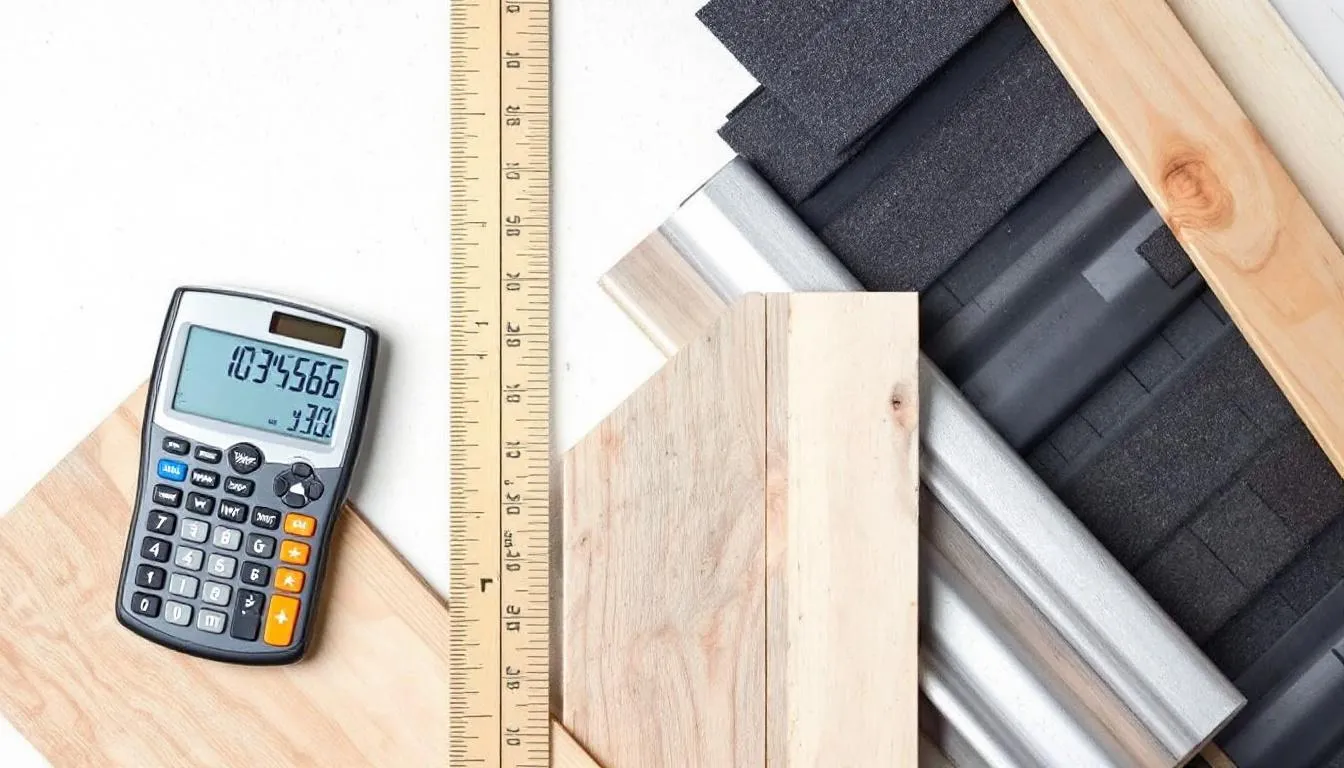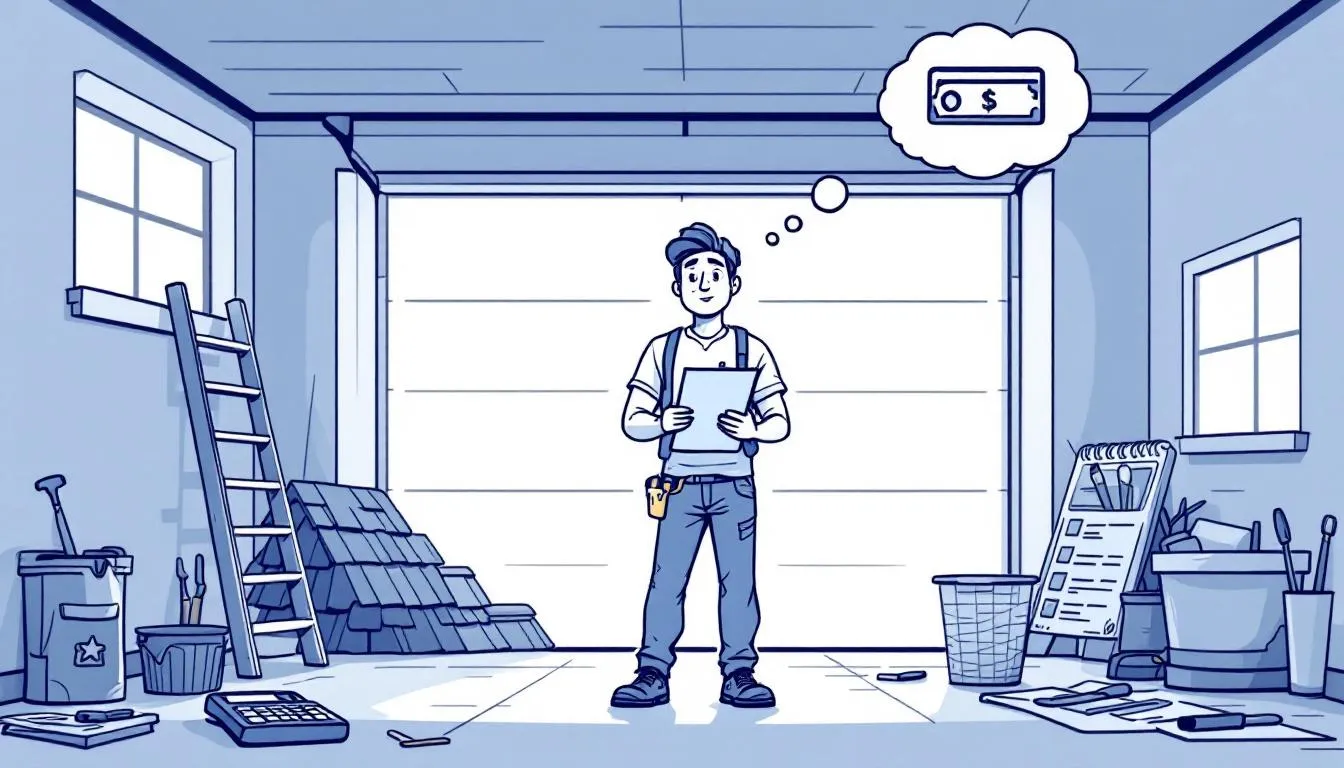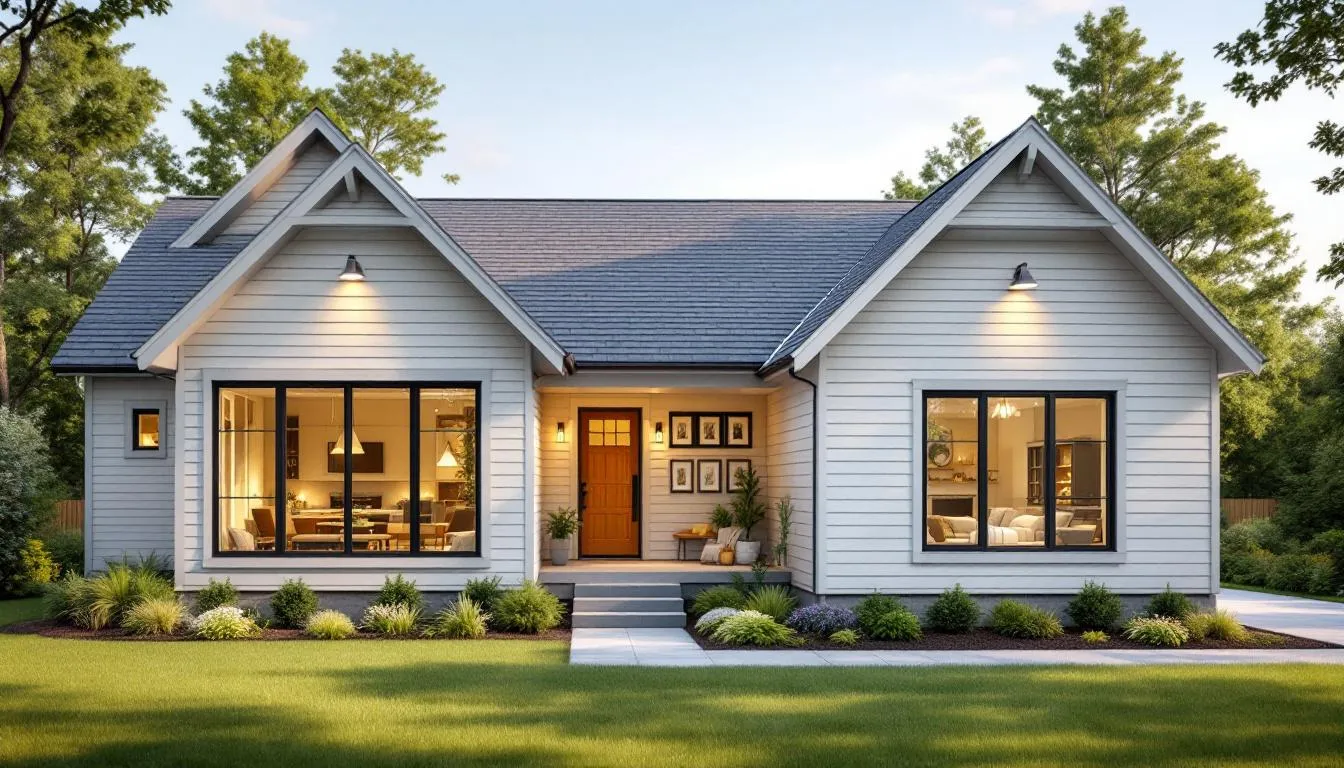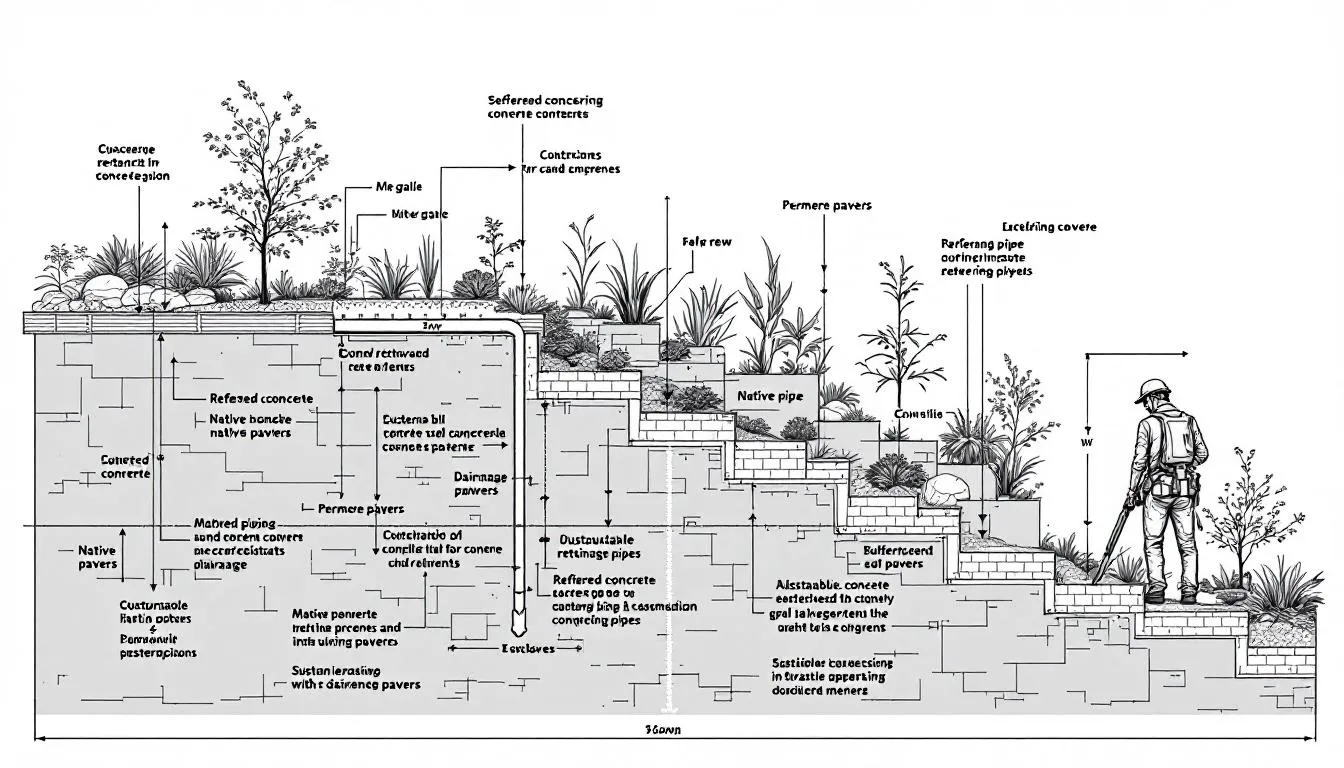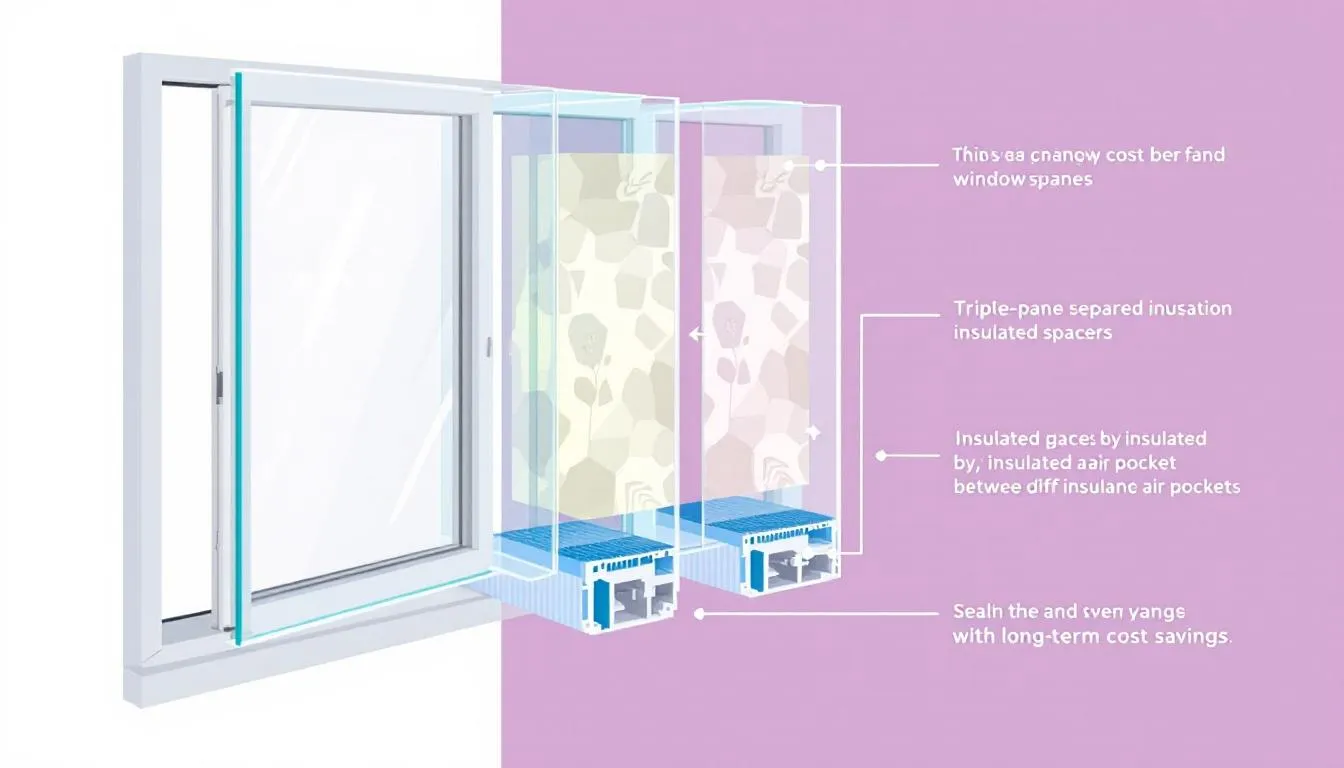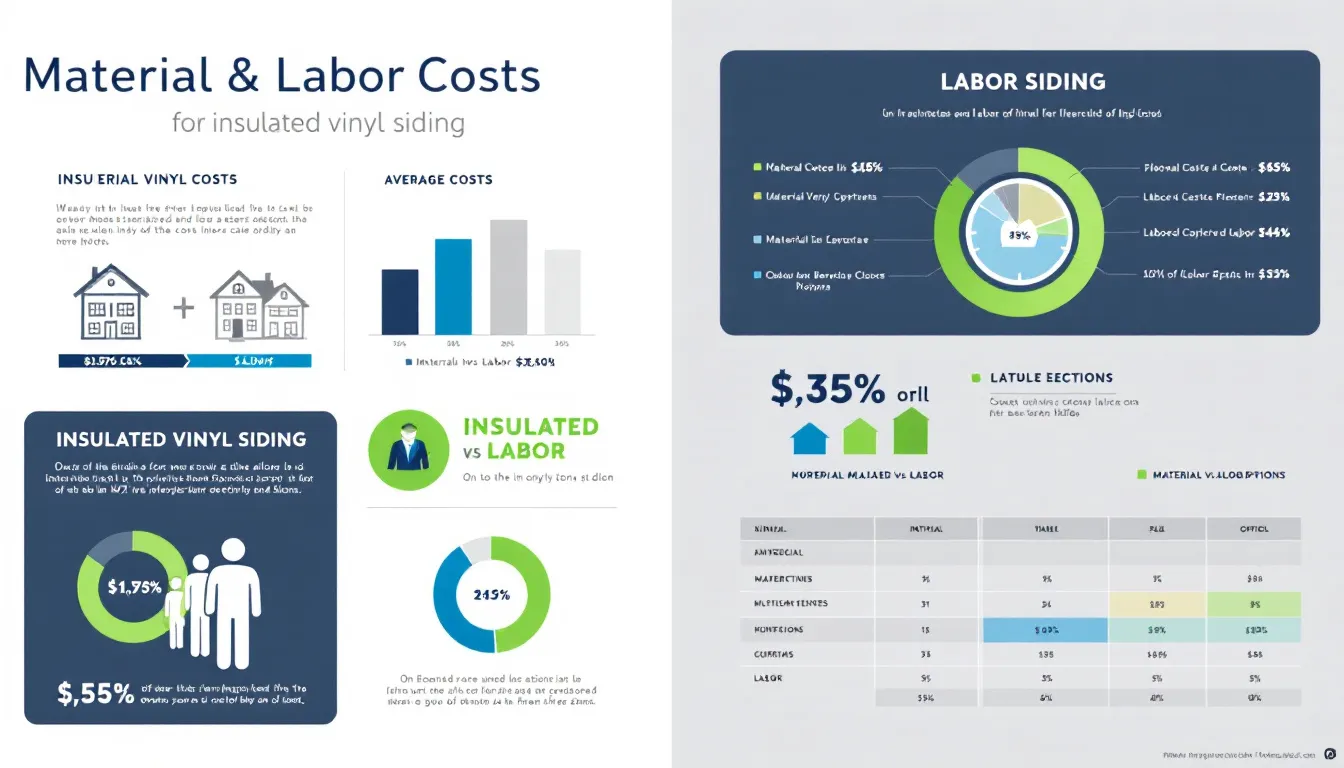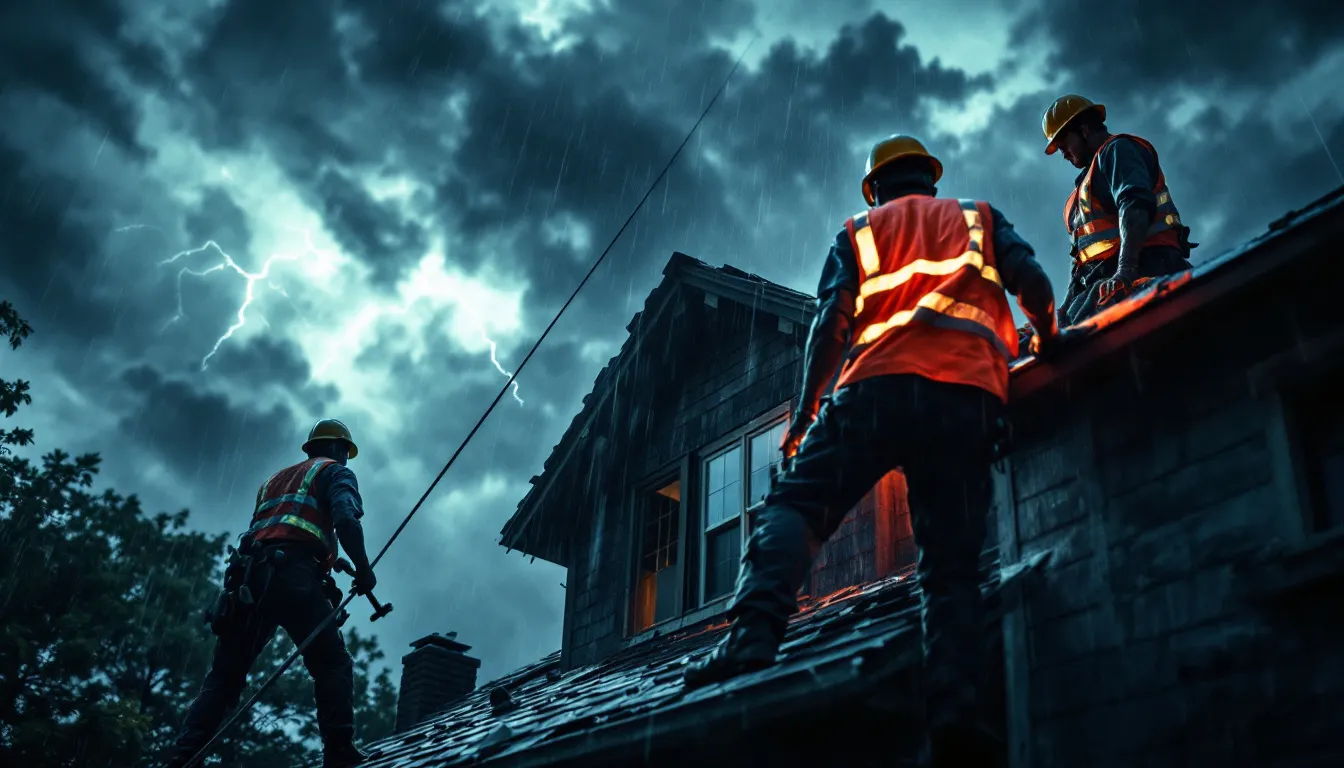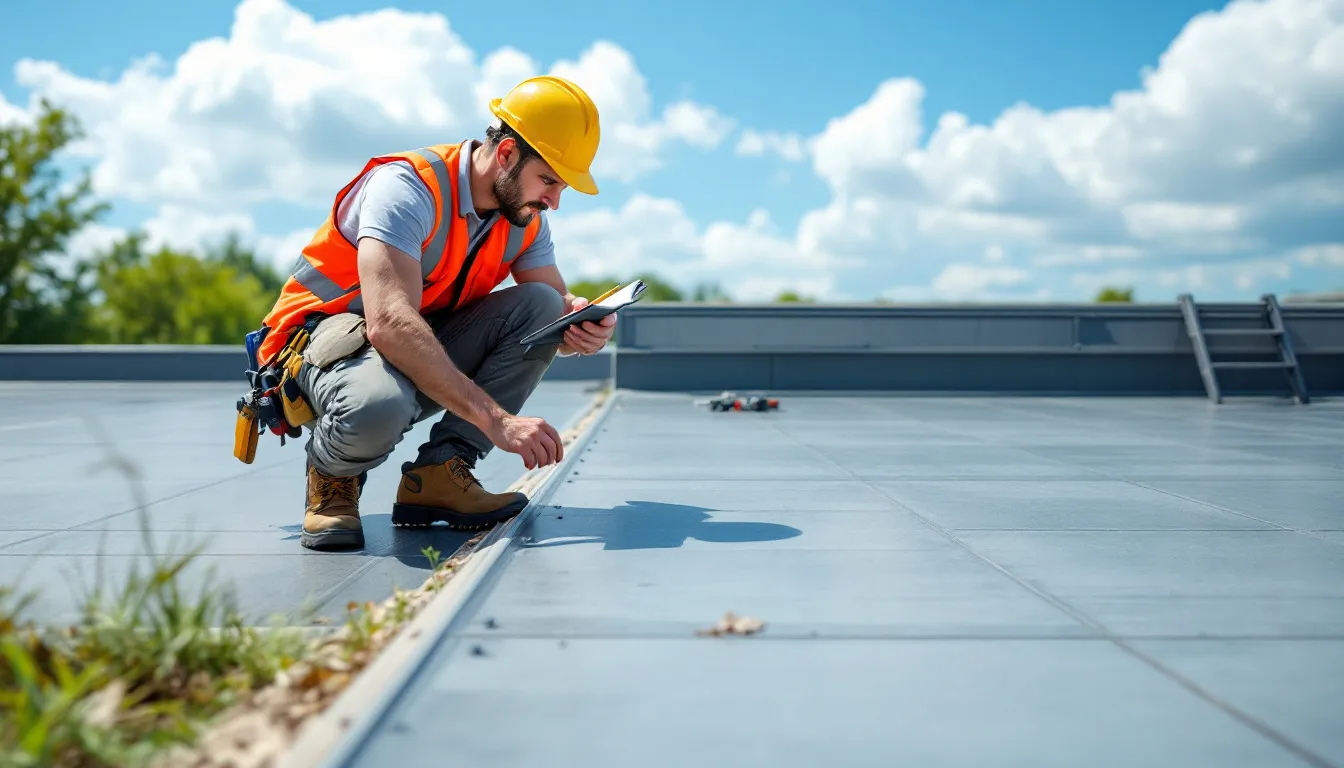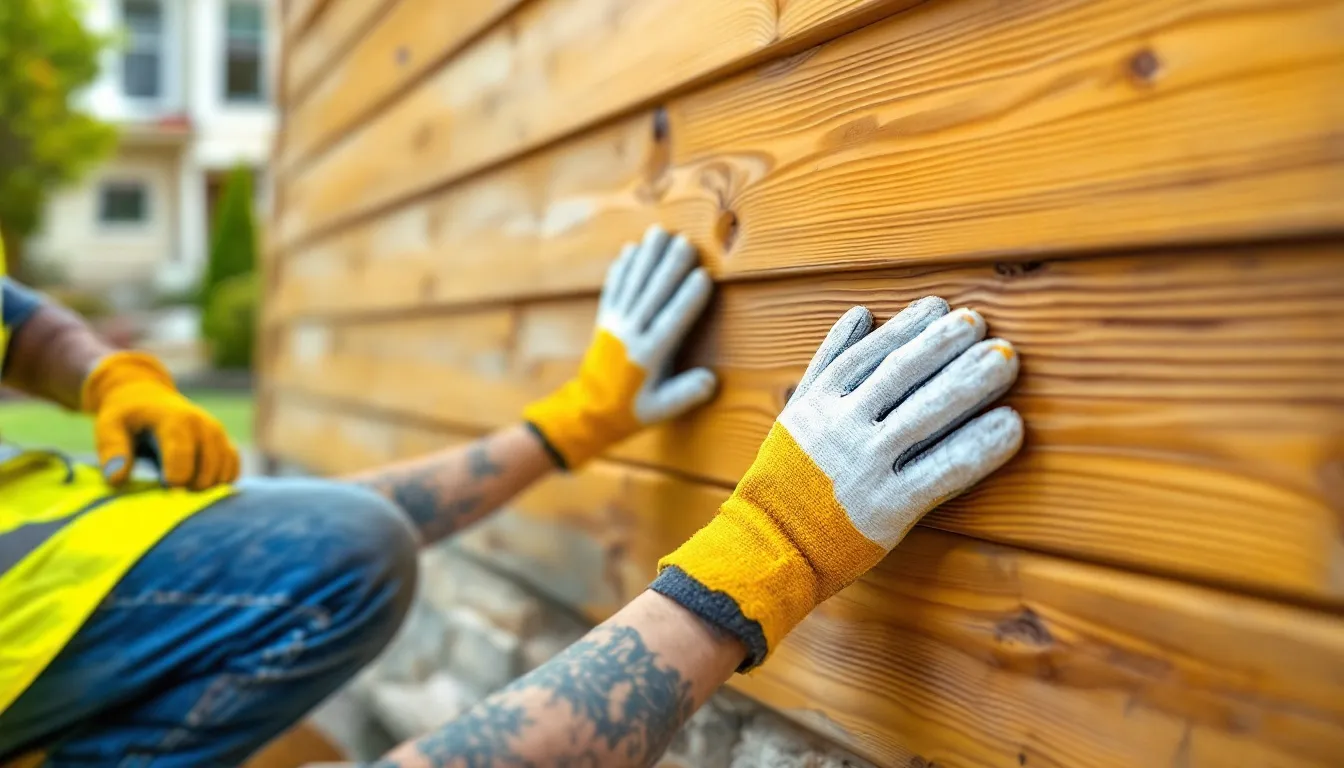The Ultimate Guide to Siding Installation: Choosing the Right Material for Your Home
The Ultimate Guide to Siding Installation: Choosing the Right Material for Your Home
The ultimate guide to siding installation: choosing the right material for your home is here to help you select the best options. From understanding the best materials for durability and aesthetics to learning the essential steps in the installation process, this guide covers everything you need. Start here to make the best choice and ensure your home stands out.
Key Takeaways
- Choosing the right siding material is essential for protecting your home from environmental damage and enhancing energy efficiency, aesthetics, and market value.
- Popular siding options, including vinyl, fiber cement, wood, aluminum, brick/stone veneer, and stucco, each have unique pros and cons that should be considered based on climate, durability, and maintenance requirements.
- Proper installation and maintenance are crucial for siding longevity, requiring homeowners to prepare adequately, choose experienced contractors, and adhere to regular cleaning and inspection routines.
Understanding the Importance of Siding
Siding is more than just a pretty face for your home; it acts as a critical barrier that shields the interior from moisture, wind, and other environmental damages. The right siding material can significantly affect your home’s durability, energy efficiency, and overall value. Imagine your home standing resilient through harsh weather, maintaining its charm, and keeping utility bills in check—all thanks to high-quality siding.
The primary function of siding is to provide protection against the elements. Different siding materials offer varying levels of performance, aesthetics, and maintenance requirements. Choosing the right siding can enhance your home’s aesthetic appeal and functionality, contributing to its overall market value. It’s not just about looking good; it’s about ensuring your home performs well and stands the test of time.
Siding also plays a significant role in a home’s exterior curb appeal. Your choice of siding can dramatically impact your home’s overall appearance and resale value. Proper siding choices increase long-term value by improving insulation and energy efficiency.
Considering various siding options ensures that homeowners select the best siding option for protection and appeal. With so many siding materials available, making an informed decision is key to achieving the best results for your home.
Popular Siding Materials: Pros and Cons
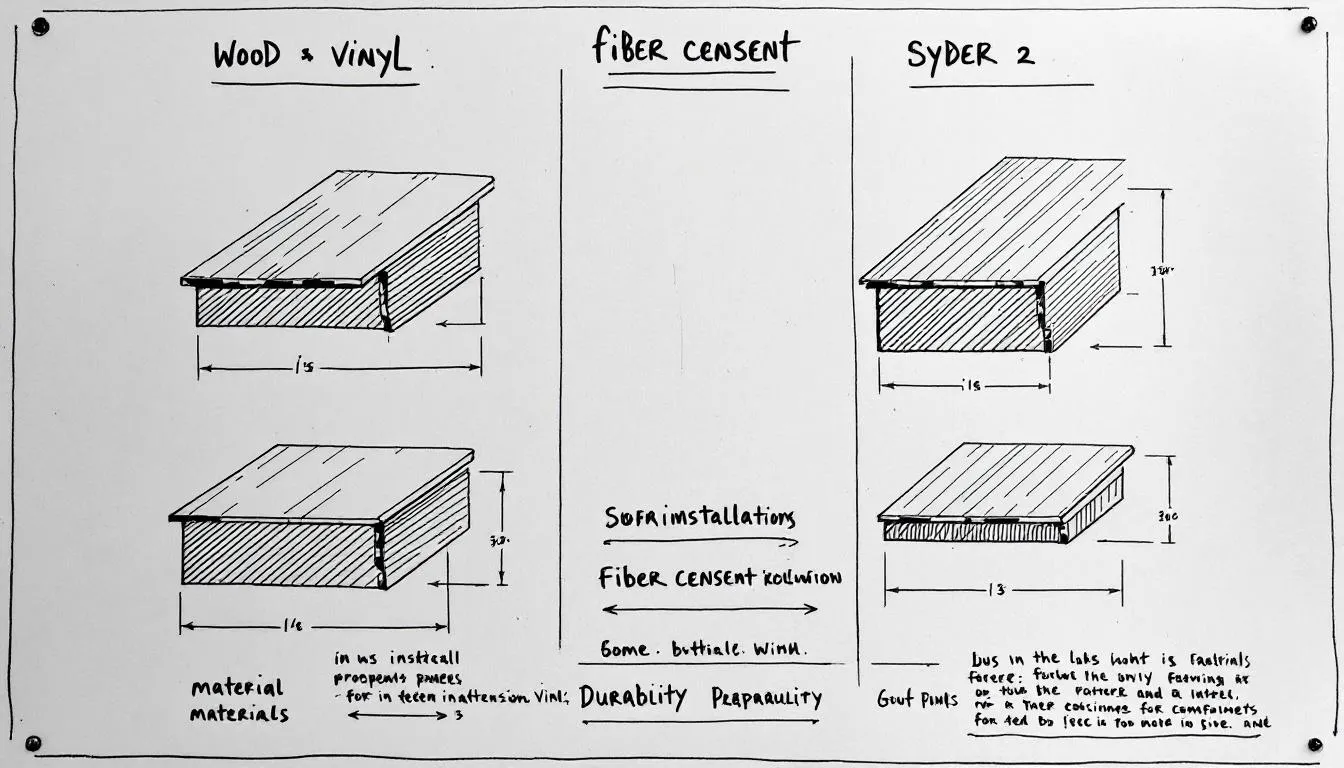
When it comes to siding for your home, there are numerous materials to choose from. The most popular siding options include:
- Vinyl
- Fiber cement
- Wood
- Aluminum
- Brick and stone veneer
- Stucco Each material has its own set of pros and cons, making it crucial to understand these differences to make an informed decision about your home exterior enhancement using the best siding materials.
Vinyl Siding: Affordable and Versatile
Vinyl siding is a popular choice due to its affordability and low upkeep requirements. Many homeowners are attracted to vinyl siding because it offers a cost-effective way to enhance their home’s exterior without breaking the bank. One of the standout features of vinyl siding is its minimal maintenance needs, allowing homeowners to save time and costs in upkeep.
In addition to being budget-friendly, vinyl siding is incredibly versatile in design. It comes in a variety of styles and colors, making it easy to find an option that suits different architectural needs. Whether you’re aiming for a traditional look or a modern aesthetic, vinyl siding offers the flexibility to achieve your desired appearance.
Fiber Cement Siding: Durable and Fire-Resistant
Fiber cement siding is recognized for its outstanding durability, making it an excellent choice for homeowners seeking a long-lasting solution. Key features and care instructions include:
- Made from a combination of cement, sand, and cellulose fibers
- Resistant to rot and pests, ensuring it withstands various environmental factors
- Can last over 50 years with proper care
- Requires only minimal maintenance, such as painting every 10 to 15 years, using materials like fiber cement.
One of the key features of fiber cement siding is its ability to mimic the appearance of natural wood, brick, or stone, providing excellent aesthetic value, like fiber cement. James Hardie fiber cement siding, in particular, is known for its longevity and low maintenance requirements. Additionally, fiber cement siding is fire-resistant, adding an extra layer of protection to your home.
Wood Siding: Natural and Classic Appeal
Wood siding offers a timeless look that enhances the classic appeal of a home. It is available in three forms:
- Shingles
- Shakes
- Planks It provides homeowners with various options to achieve their desired aesthetic. Common wood types for siding include:
- Cedar
- Pine
- Redwood Each offers a unique aesthetic that can add character to your home.
However, wood siding requires regular maintenance to preserve its appearance and durability. This includes painting or staining to protect it from the elements and maintain its integrity. Despite the upkeep, many homeowners find the natural beauty and warmth of wood siding worth the effort.
Wood siding is particularly suitable for traditional homes, complementing historic and classic architectural styles. Its rustic appeal and natural aesthetic make it a favorite among those looking to enhance their home’s curb appeal with a touch of elegance and tradition.
Aluminum Siding: Weather-Resistant and Low Maintenance
Aluminum siding is known for:
- Its weather resistance
- Low maintenance
- Durability, making it ideal for long-term use
- Performing well in harsh climates, protecting your home from the elements
Additionally, aluminum siding reflects heat, which can help reduce cooling costs during hot weather.
Brick and Stone Veneer: Elegant and Durable
Brick and stone veneer offer a classic and elegant appearance, enhancing the aesthetic of any home. This siding material provides added durability, ensuring it withstands various environmental factors effectively.
Brick and stone veneer deliver a sophisticated look while being more cost-effective than solid brick or stone.
Stucco Siding: Traditional and Energy Efficient
Stucco siding is favored for its traditional look, often resulting in a classic and timeless appeal. Made from a mixture of sand, lime, and cement, stucco is known for its energy-efficient properties, helping to maintain comfortable indoor temperatures.
Stucco siding is particularly suitable for warm, dry climates where its properties can be fully utilized.
Factors to Consider When Choosing Siding
When selecting siding for your home, consider factors such as climate, budget, and personal taste. Important considerations include:
- Aesthetic preferences
- Durability
- Maintenance
- Cost
- Energy efficiency
- Climate suitability.
Balancing these factors helps homeowners choose the right siding material that meets their needs and enhances their home’s exterior.
Climate Suitability
Climate plays a crucial role in choosing the right siding material for your home. Key factors related to climate when choosing siding materials include moisture, temperature fluctuations, and high winds. Local climate determines the appropriate siding based on humidity levels, rainfall frequency, and temperature variations. In areas with high humidity or heavy rainfall, it’s essential to select siding options that resists moisture and mold.
Certain siding types are engineered to withstand severe weather, which extends their lifespan and enhances home protection. For example, stucco siding is particularly popular in warmer, drier climates due to its ability to handle temperature changes effectively. Selecting the right siding materials based on local climate conditions is crucial for ensuring long-lasting protection and performance.
Durability and Maintenance Requirements
Durability and maintenance are critical factors to consider when choosing siding materials. Here are some common options and their characteristics:
- Vinyl siding: Popular due to its affordability, though concerns exist about its durability under extreme weather conditions.
- Wood siding: Aesthetically pleasing but requires significant maintenance and is more susceptible to weathering compared to modern options.
- Fiber cement, aluminum, and other materials: Noted for their durability and low maintenance needs.
Fiber cement siding, for example, requires minimal maintenance, needing only an annual cleaning with a garden hose and soft brush. In contrast, wood siding needs regular painting or staining to maintain its appearance and protect against the elements. Vinyl and fiber cement siding also require low maintenance, with occasional cleaning being sufficient.
Conducting regular inspections and maintenance is vital to catch potential issues early, preventing further deterioration. Signs of wear like cracks and warping indicate that siding may need repair or replacement to maintain structural damage, especially in areas prone to extreme temperature fluctuations.
Choosing durable siding materials can reduce environmental impact by minimizing the need for frequent replacements. Investing in low-maintenance siding options helps save time and resources over time.
Aesthetic Appeal and Architectural Style
The choice of siding can significantly enhance a home’s curb appeal and market value. Vinyl siding provides a wide range of color options, making it a versatile choice for home aesthetics. Whether you’re aiming for a modern look or a more traditional aesthetic, vinyl siding can cater to various personal tastes.
Wood siding is commonly used in historic homes or those wanting a rustic appearance. Real wood or cedar siding is known for its natural, rustic charm, appealing to homeowners seeking a classic look with a wood like appearance. A major benefit of wood siding is its natural beauty and warmth, which can enhance the overall aesthetic of a home.
By choosing the right siding material, you can ensure your home reflects your personal style while fitting seamlessly with its architectural design. The best siding can enhance both aesthetics and functionality.
Energy Efficiency and Insulation
The choice of siding material can significantly influence a home’s energy efficiency by improving home’s insulation. Updated siding contributes to energy efficiency by improving insulation and eliminating drafts. Insulated siding options can improve a home’s thermal envelope and lower energy consumption. There are various insulated siding options available to enhance energy efficiency.
High-quality siding serves as a protective barrier against environmental elements. It also plays a role in thermal regulation. Innovations in materials and technology designed for improved thermal performance enhance energy performance. Correct installation ensures that siding performs well in preventing heat loss and reducing the burden on heating and cooling systems.
With energy-efficient siding, you can reduce energy costs and enjoy a more comfortable living environment while improving your home’s energy efficiency and lowering energy bills.
Budget and Cost Considerations
Understanding the total costs of siding includes materials, installation, upkeep, and potential long-term savings. When budgeting for siding, fiber cement and engineered wood provide the best long-term value. They are top choices for durability and performance. The higher upfront cost of fiber cement siding requires consideration of its long-term maintenance benefits. When comparing options, consider that brick or stone veneer provides significant cost benefits compared to solid materials.
Consider the drawbacks of high-maintenance siding materials that require more time and energy for repairs. Siding can improve your home’s energy efficiency, leading to lower utility bills and overall cost savings.
Homeowners should balance their initial investment in siding materials with long-term savings and value. Common concerns among homeowners regarding siding include costs, installation costs, installation timelines, and contractor reliability.
Environmental Impact
Sustainable siding options for eco-conscious homeowners include:
- Reclaimed wood
- Recycled HDPE siding
- Aluminum siding, which is environmentally friendly because it is recyclable
- Fiber cement siding, which uses natural materials like sand and cellulose fibers
- Vinyl siding, which is not biodegradable but is long-lasting and recyclable
To evaluate the environmental impact of siding materials, one should consider the production process and high quality materials’ lifespan. Choosing durable materials siding can positively impact the environment by reducing the environmental footprint through less frequent replacement.
Opting for eco-friendly siding makes a lasting environmental impact while ensuring your home looks and performs well.
The Siding Installation Process
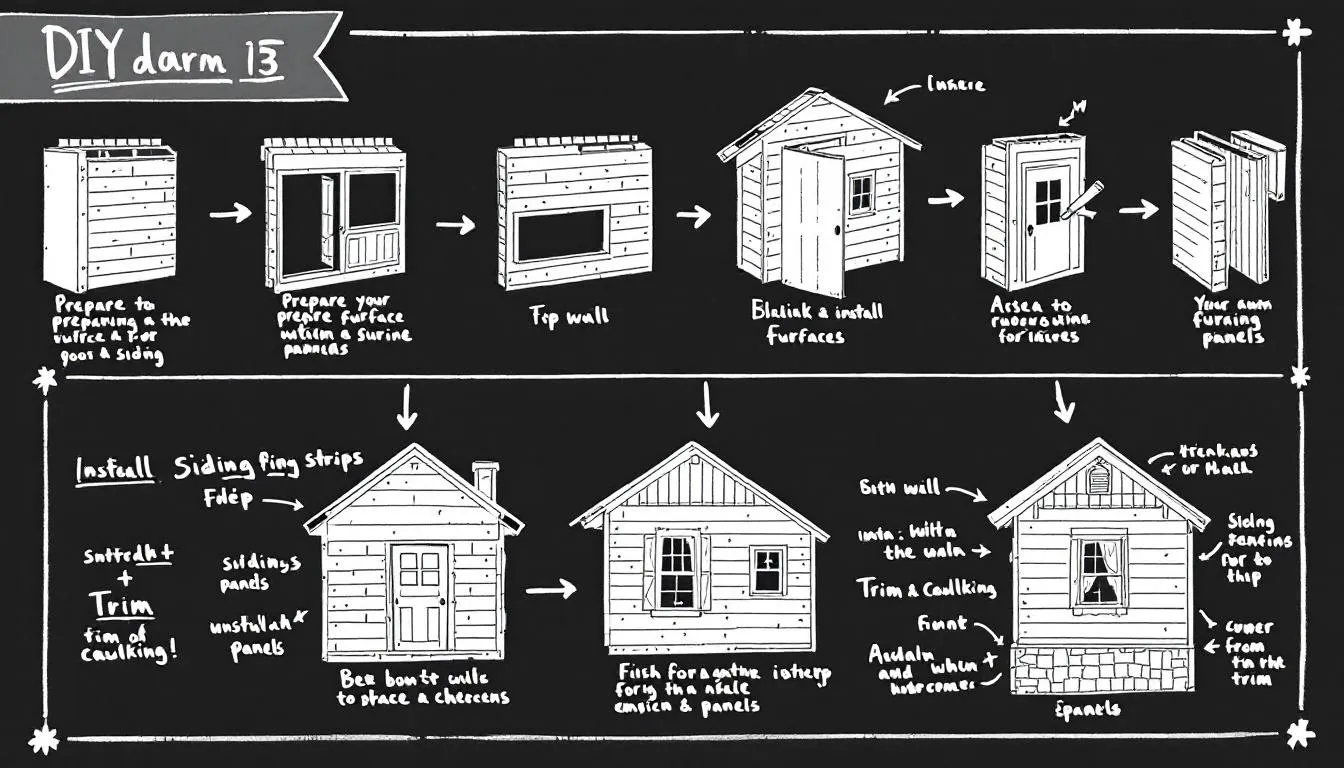
Effective installation preparation involves accurate measurements and ensuring walls are ready for the new siding. Planning ahead and budgeting properly is key to a smooth siding project.
The siding installation process includes measuring and cutting pieces. It involves attaching the pieces from the bottom up and ensuring proper overlap for water resistance. Professional expertise is important in the siding installation process due to the complex nature of installation.
After installation, a final walkthrough with the homeowner ensures satisfaction.
Preparing Your Home for Siding Installation
Proper preparation is crucial before installing siding. It ensures that the new siding functions effectively.
The first step in preparing your home for siding installation is:
- Removing the old siding.
- Repairing any damaged sheathing to ensure a solid foundation for the new siding.
- Installing a weather barrier to protect your home from moisture and enhance the durability of the new siding.
Ensuring your home is ready for new siding not only aids in the installation process but also ensures the longevity and performance of the siding material. By addressing any underlying issues and adding protective measures, you set the stage for a successful siding installation project.
Installation Techniques and Best Practices
Improper installation of siding can lead to issues like poor insulation and sealing, which results in increased energy costs. Proper sealing during installation is crucial to prevent water infiltration and ensure the longevity of the siding.
Professional installers have the experience and tools necessary to effectively manage these aspects, ensuring your siding performs as intended with professional installation.
Common Challenges in Siding Installation
Common challenges during siding installation include uneven walls, ventilation setup, and material expansion and contraction. Damage from improper installation is typically not covered by siding warranties. Professional installers have the experience and tools necessary to effectively manage siding installation challenges.
Overcoming these hurdles ensures the siding serves its purpose effectively and lasts for many years, demonstrating long term durability.
Maintenance Tips for Long-Lasting Siding

Consistent maintenance routines can significantly prolong the lifespan of your siding and help avoid expensive replacements. By following regular maintenance tips, you can ensure your siding remains in top condition, enhancing your home’s curb appeal and structural integrity.
Regular Cleaning and Inspection
Regular cleanings are crucial to prevent the accumulation of dirt, mold, and other environmental factors that can damage siding. For example, stucco siding should be cleaned two to three times a year using a hose with a spray nozzle or a power washer on the lowest setting. When cleaning vinyl siding, pressure wash at the lowest setting and avoid excessive force. Avoid harsh chemicals and high-pressure washing techniques when cleaning siding.
Regular inspections assist in early identification of siding problems. This proactive approach can prevent more severe damage. Vegetation should be kept trimmed at least 12 inches away from siding to minimize moisture retention that can lead to mold growth. By maintaining a regular cleaning and inspection schedule, you can catch potential problems early and keep your siding looking its best.
Repairing and Replacing Damaged Sections
Promptly addressing peeling paint or small cracks in wood siding helps prevent serious damage. Homeowners can take the following actions for minor damages:
- For wood siding: replace damaged boards.
- For vinyl siding: patch cracks and holes.
- To maintain the appearance of vinyl siding: replace any damaged sections as soon as they are identified.
Hiring professionals for larger repairs or replacements ensures proper handling. Cracked or warped panels in vinyl siding should be replaced promptly to prevent water from seeping in.
Wood siding requires regular maintenance such as painting or staining to protect it from the elements and maintain its integrity. Improper installation or repair of siding can cause significant problems. This may result in water damage and additional issues later on.
How to Choose the Right Siding Contractor
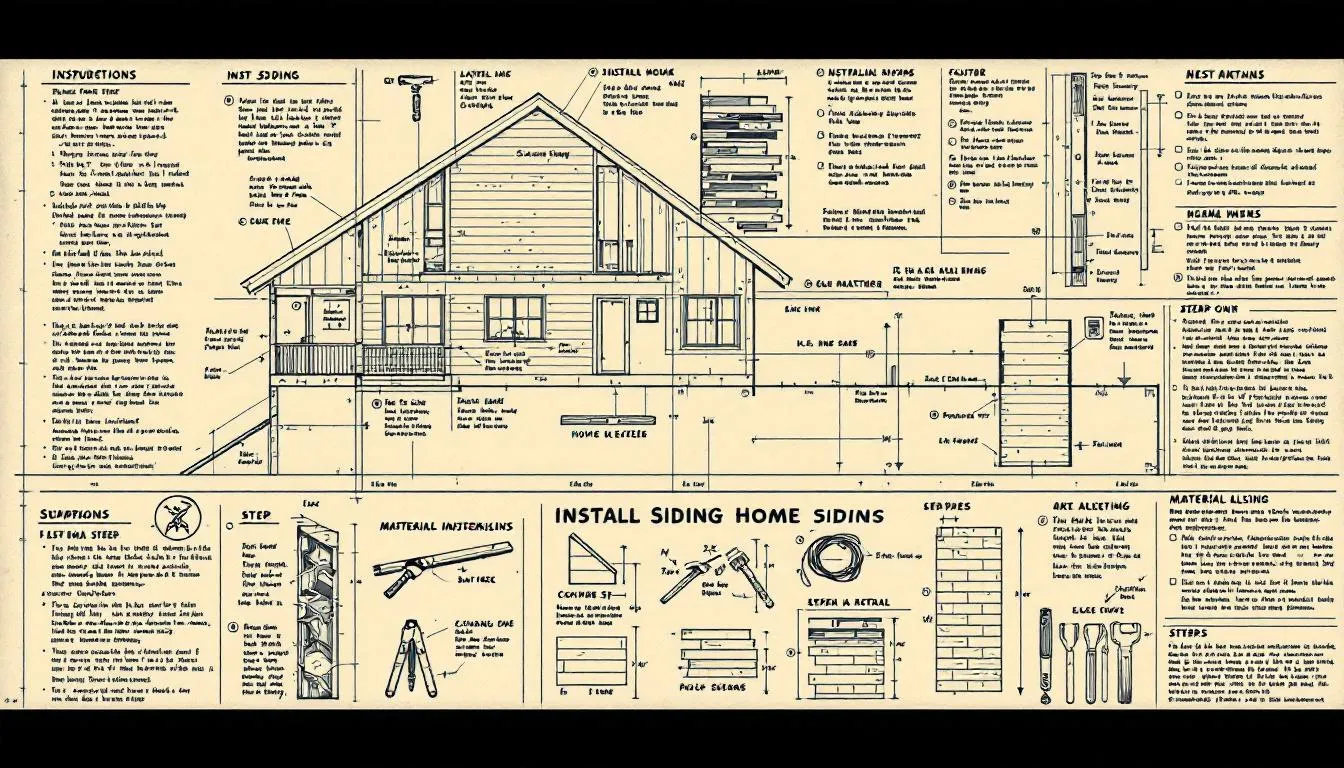
A reliable contractor should:
- Have a solid track record and provide proof of their licensing and insurance.
- Be chosen from a recognized network, like the James Hardie Alliance, to provide an added layer of assurance.
- Provide referrals and have positive customer reviews to help gauge their reputation.
- Communicate effectively and be responsive during interviews, as homeowners should trust their instincts about these qualities.
Comparing quotes from multiple contractors allows homeowners to assess the best value for their siding project. It’s important to clarify the details of the estimate, including material costs and labor costs. Contractors should be able to outline their installation process to ensure proper adherence to guidelines.
By thoroughly vetting potential contractors, you can ensure your siding project is handled by professionals who will deliver high-quality results.
Summary
Choosing the right siding for your home involves considering various factors such as material durability, maintenance requirements, aesthetic appeal, energy efficiency, budget, and environmental impact. Each siding material—whether it be vinyl, fiber cement, wood, aluminum, brick and stone veneer, or stucco—offers unique benefits and challenges. By understanding these aspects and following best practices in installation and maintenance, you can enhance your home’s curb appeal, protect it from the elements, and improve its overall value. Empowered with this knowledge, you’re now ready to make informed decisions and embark on a successful siding project that will transform your home.
